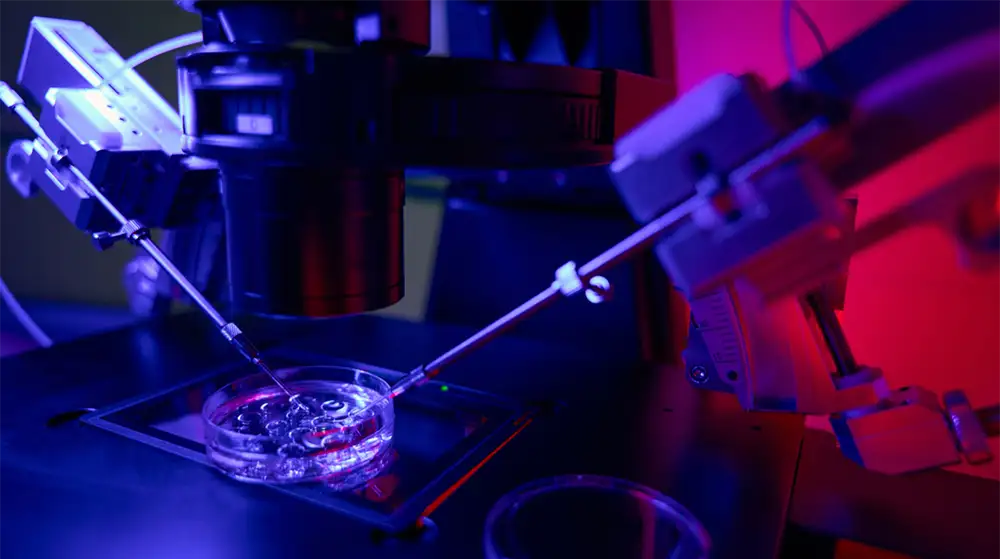Many people don’t think too critically about how a singular egg and sperm transform into a blastocyst, and then further transforms into a complex multi-organ being with trillions of cells. This occurs due to a series of precisely choreographed cellular divisions and reorganizations. At the heart of this intricate dance is the formation of germ layers – the foundational blueprints that give rise to all the tissues and organs in your body.
So, what exactly are germ layers? They are distinct layers of cells that emerge during the early stages of embryonic development, each with a specific destiny to fulfill. These layers are the ectoderm, mesoderm, and endoderm. They act as the basic construction crew, determining the fate of every cell in your body.
The ectoderm, the outermost layer, is responsible for forming the nervous system, skin, and various components of the sensory organs. The mesoderm, sandwiched in the middle, gives rise to muscles, bones, blood vessels, and most of the circulatory and reproductive systems. Finally, the endoderm, the innermost layer, builds the digestive and respiratory systems, as well as organs like the liver and pancreas.
But the germ layers and what they do are so much more complex. A simple 3 sentence summary cannot fully explain the intricacies of embryonic development.
Understanding germ layers is crucial for comprehending the intricate processes that shape embryonic development and, ultimately, the formation of a fully functional organism. From congenital abnormalities to regenerative medicine, the study of germ layers holds the key to unlocking the mysteries of developmental biology and paving the way for groundbreaking medical advancements.
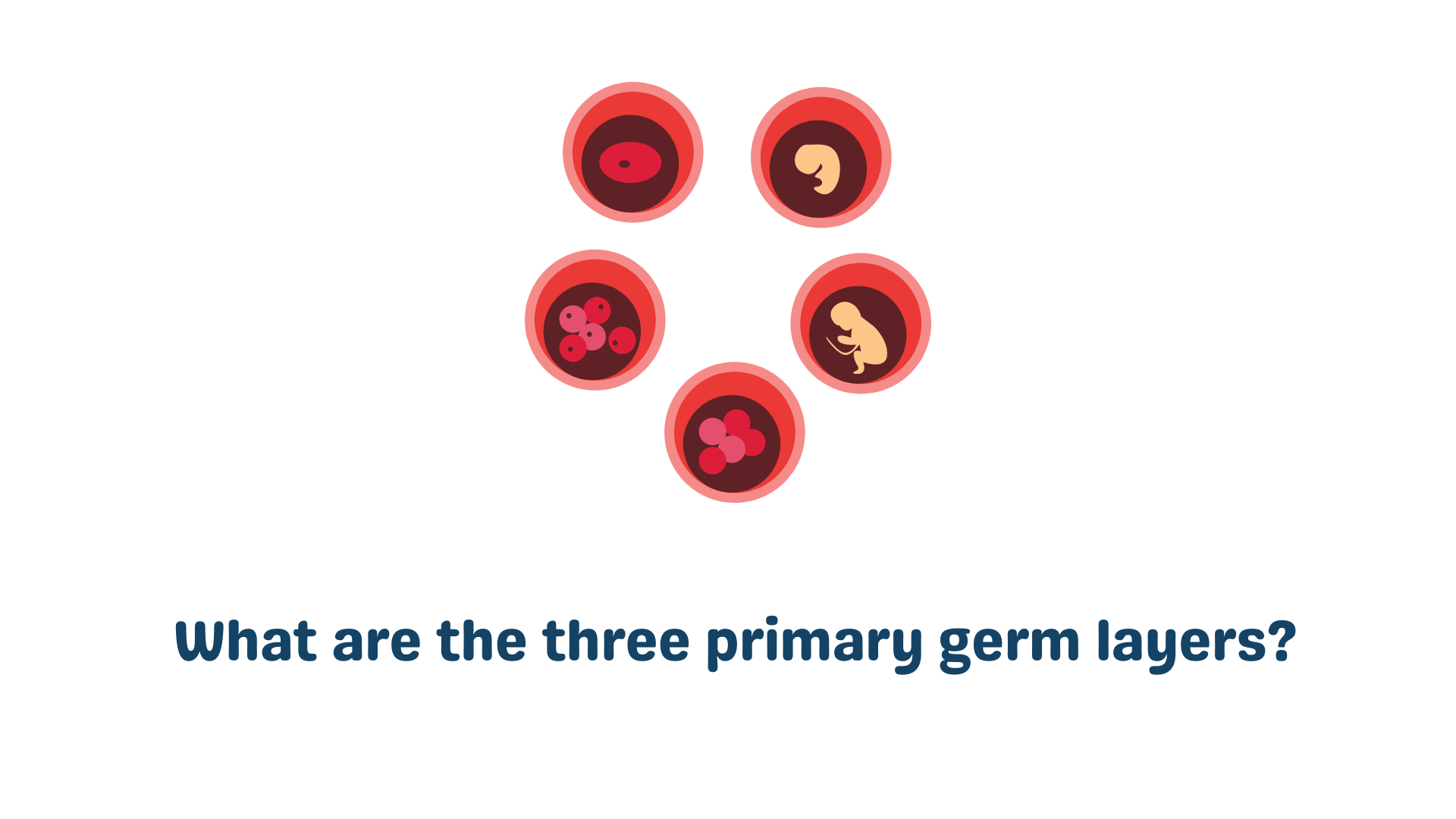
Delve into the world of embryonic development, and understand the question: what are the 3 primary germ layers?
What is a germ layer?
A germ layer is a thin layer of cells in the blastocyst that helps organize organism development early on. The three primary germ layers are the fundamental blocks of embryonic development, forming a complex framework during gastrulation. These layers are:
- Ectoderm
- Mesoderm
- Endoderm
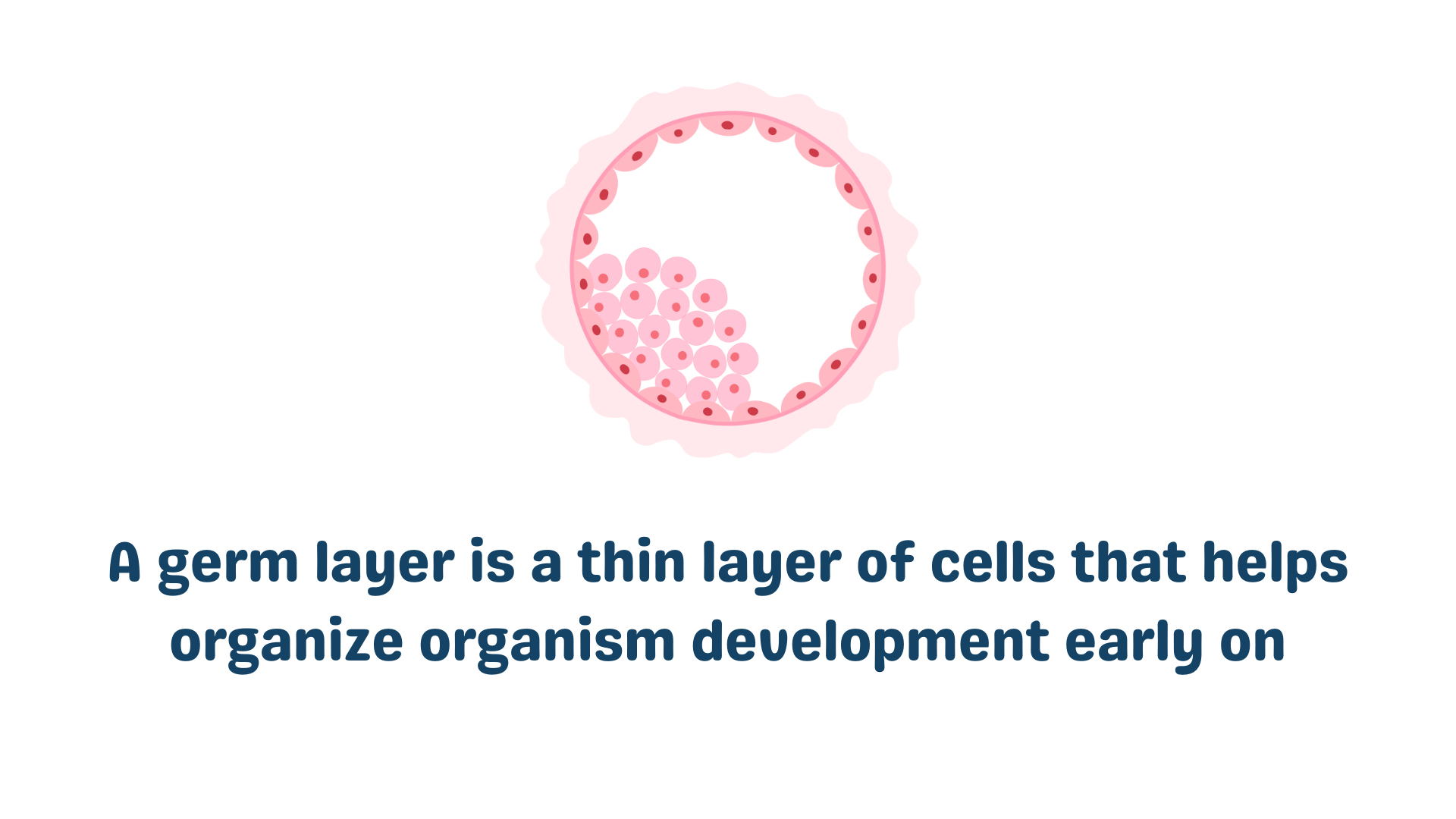
They give rise to all the tissues and organs of the body, setting the stage for the intricate symphony of life.
To understand the complex role of germ layers, it is helpful to understand background information pertaining to fertilization and the early development of an embryo.
The genesis of a new organism begins when a haploid egg and sperm fuse together to form a diploid zygote during fertilization. This is where biology combines the genes of the mother and father so that you get a diverse set of genetic material from both parents.
This momentous union sets in motion a symphony of molecular events.
To start, the egg begins to release many factors that regulate gene expression, affecting early development and the fate of cells. Within minutes of zygote formation, the zygote starts to divide and multiply during a series of mitotic cell divisions.
These events form the blastula, a hollow ball made up of a small cluster of cells called blastomeres.
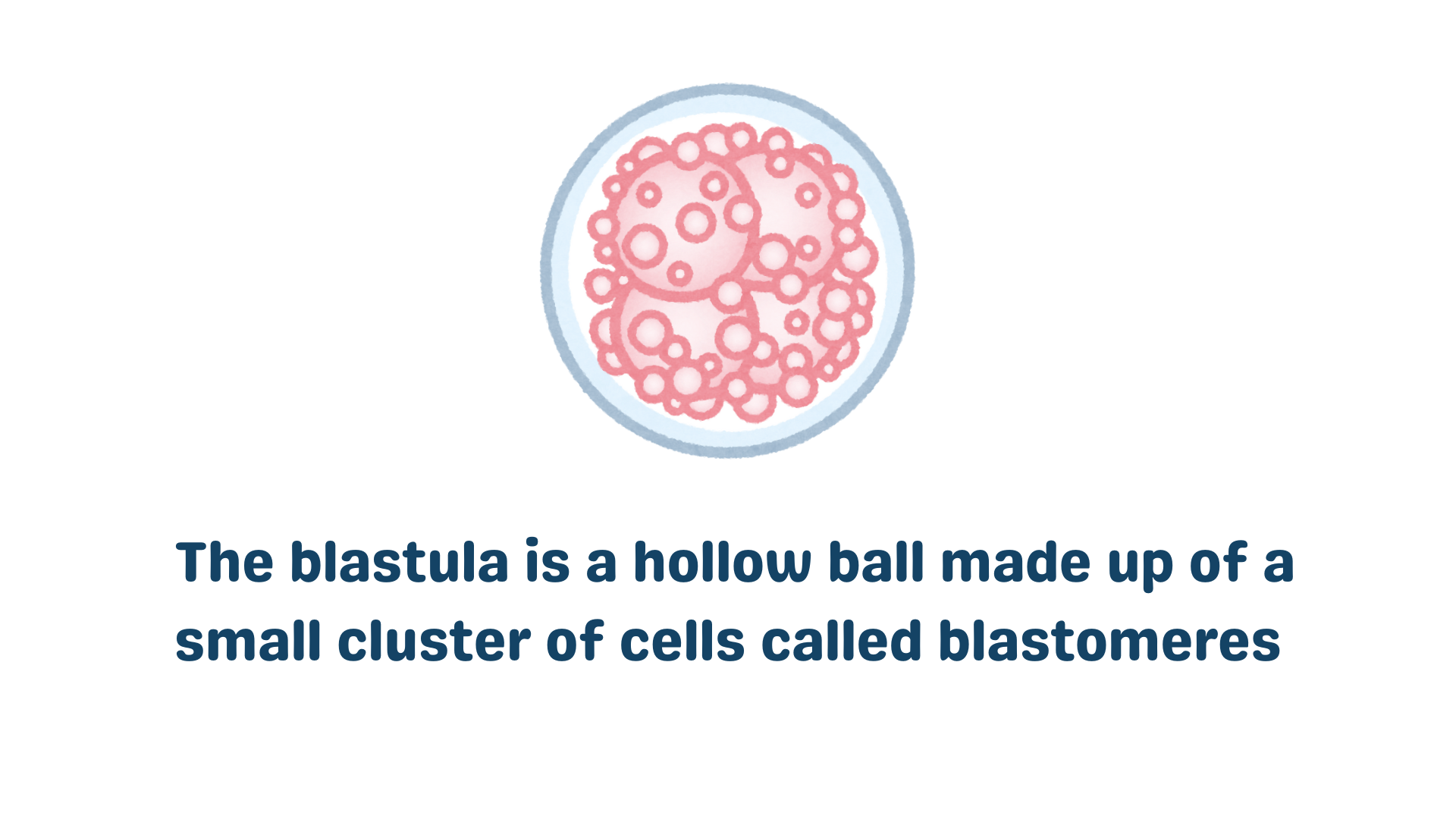
In mammals, this early stage of development sees the blastula arrange itself into two preliminary layers – an inner cell mass (ICM) and the trophoblast (outer layer), each playing pivotal roles in shaping the nascent embryo’s future. The ICM will give rise to the three primary germ layers and an embryo, while the trophoblast is important for implantation in the uterus and eventually forms part of the placenta.
As the ICM continues to divide, cells continue to receive signals from the egg and other cells. They start to migrate to specific areas of the blastula during gastrulation.
Cellular movement during gastrulation results in a massive revamping of the embryo from a simple amalgamation of cells to a multilayered organism. The three primary germ layers formed during gastrulation are precursors for all the tissues and organs that make up an adult organism.
Let’s take a look at each of the germ layers in some detail.
Endoderm: Orchestrating Internal Linings and Organs
During gastrulation, the endoderm starts to fold in, forming the innermost layer of the embryo. The folding also enters the internal area of the blastocoel, laying the groundwork for the internal linings and organs. The cells that differentiate from the endoderm’s are responsible for functions such as nutrient absorption, hormone regulation, and maintaining homeostasis.
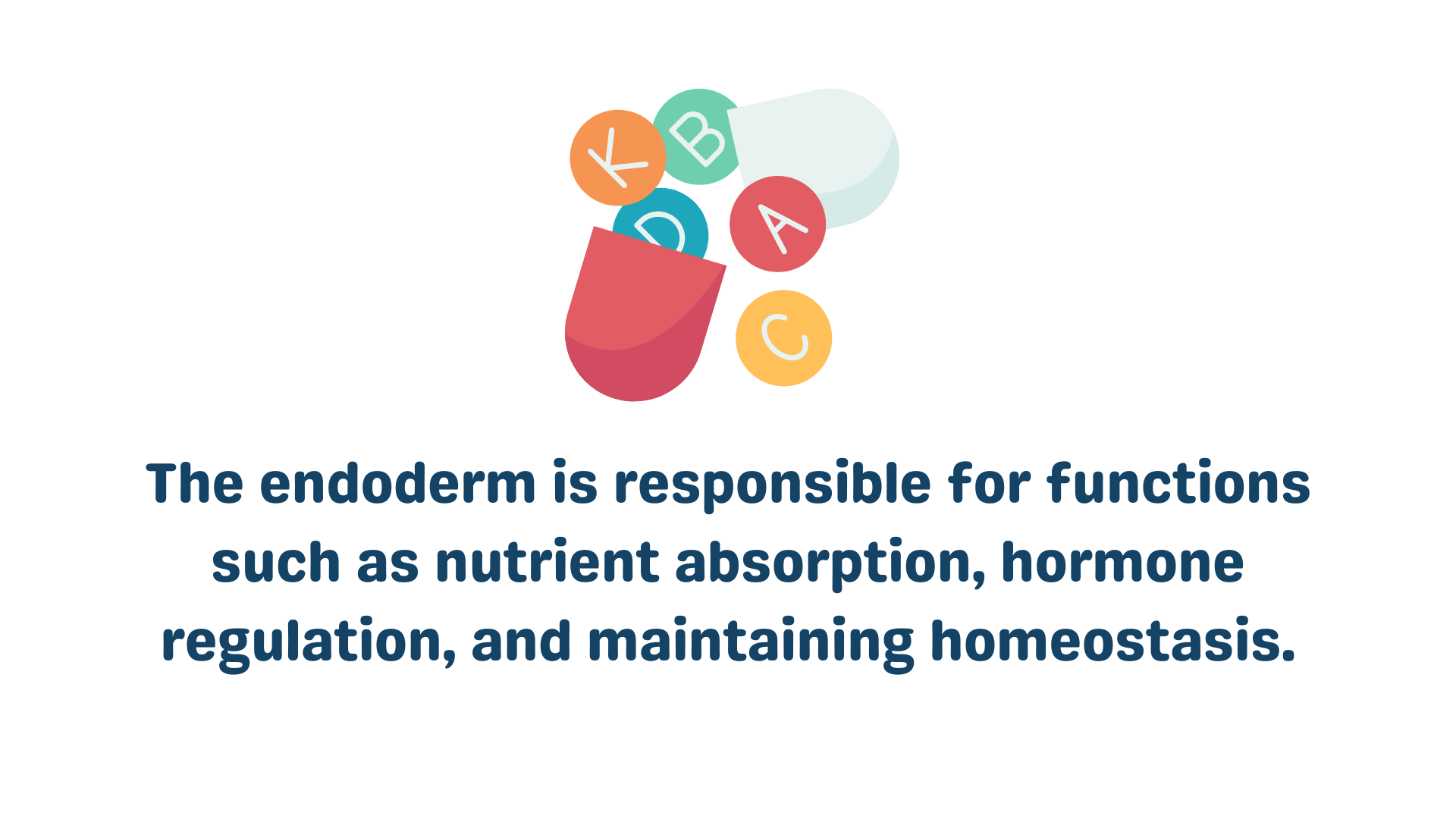
Epithelial Linings:
The endoderm gives rise to the epithelial linings of several vital organs and structures, including:
- The respiratory tract (from the trachea to the alveoli of the lungs)
- The digestive tract (from the esophagus to the intestines)
- The urinary bladder and urethra
These epithelial linings are essential for functions such as nutrient absorption, waste elimination, and maintaining internal balance and harmony within the body.
Glandular Organs and the Endocrine System:
Endodermal cells differentiate into glandular organs such as:
- Liver
- Pancreas
- Thyroid gland
- Thymus
- Parathyroid glands
These glands play crucial roles in metabolism, digestion, hormone production, and immune system function.
Some endodermal cells differentiate into endocrine cells, which are responsible for producing hormones that regulate various physiological processes, including reproduction and growth.
Mesoderm: Architect of Structural Systems
The mesoderm is essential in its role in maintaining and supporting the structural integrity of the body, the functioning of internal organs, and the formation of supportive tissues that maintain the body’s form and function during development and throughout life.
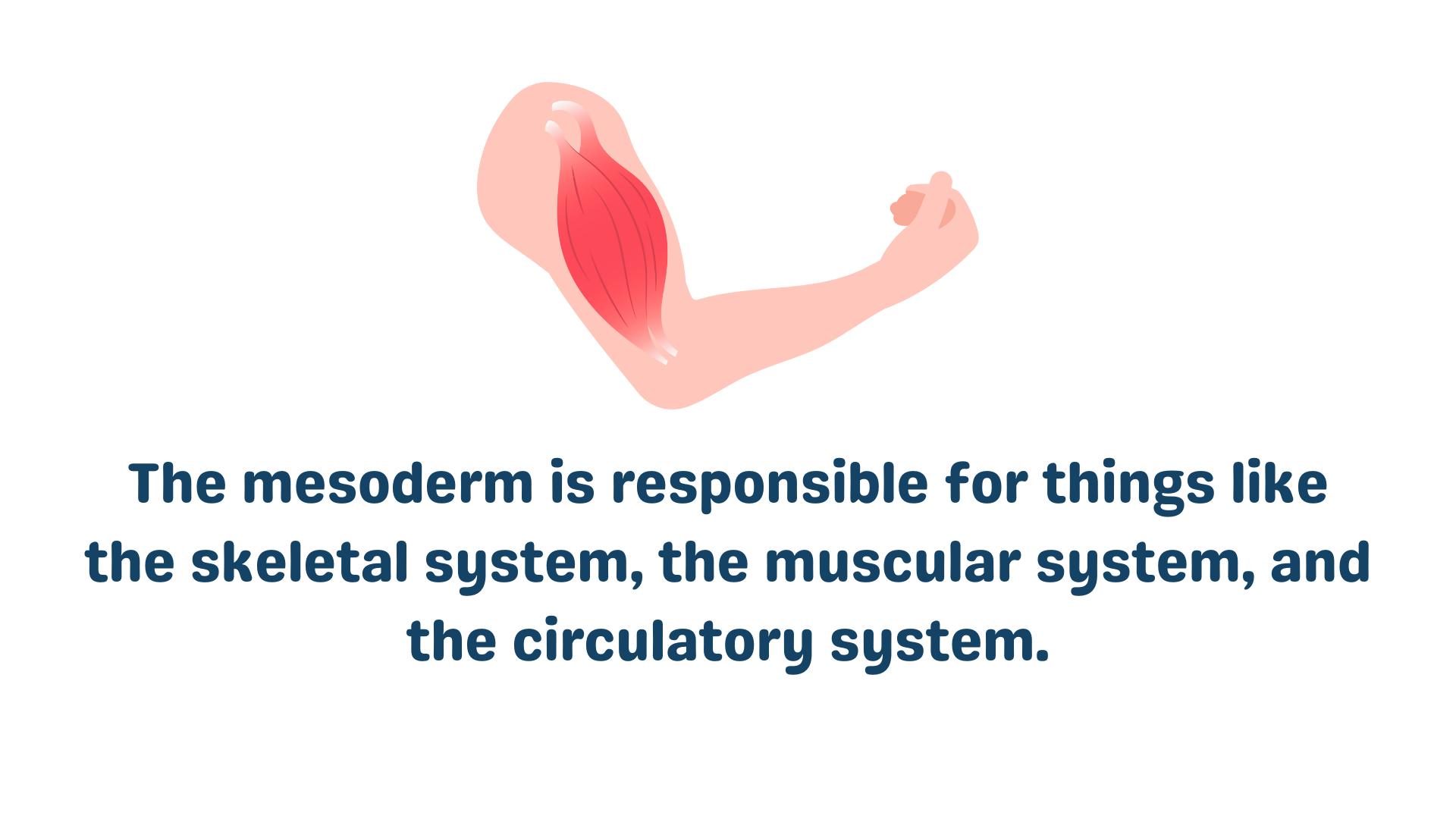
Connective Tissues and Structural Development:
Mesodermal cells differentiate into various types of connective tissues, including:
- Adipose tissue (fat)
- Blood,
- Lymphatic tissues
One key role of mesodermal cells is the development of the skeletal system, including bones and cartilage. Another role is the development of the muscular system, which includes skeletal muscles, smooth muscles, and cardiac muscles.
During gastrulation, mesodermal mesenchymal cells migrate inwards from the bottom of the blastula. These mesenchyme cells are multipotent, meaning that they can differentiate into many cell types under the mesodermal germ layer, including osteoblast and chondrocytes. These are two cell types that are vital for the formation of the internal skeleton.
Organ Development:
The mesoderm also contributes to the formation of internal organs such as:
- Kidneys
- Gonads (ovaries and testes)
- Adrenal cortex,
- Parts of the reproductive system.
Additionally, mesodermal stem cells give rise to the circulatory system, including blood vessels and the heart.
Notochord Formation:
The mesoderm contributes to the formation of the notochord, a temporary structure that plays a crucial role in guiding the development of the neural tube. This tube eventually becomes the brain and spinal cord.
Ectoderm: Nurturing Nervous and Sensory Systems
While the endoderm and mesoderm continue to expand internally, the ectoderm spreads over the external surface of the blastocoel.
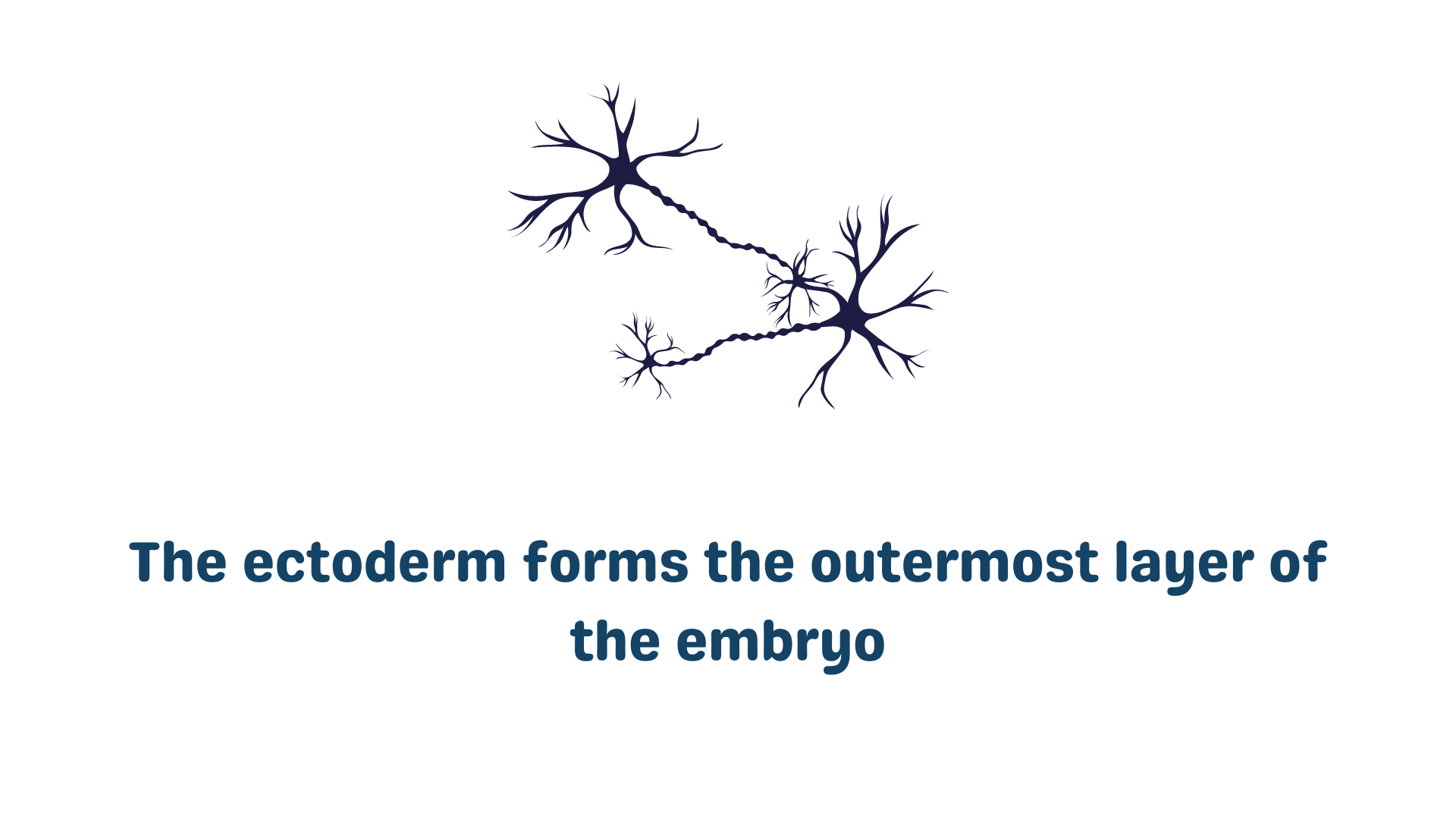
The ectoderm forms the outermost layer of the embryo and plays a crucial role in the development and functioning of the…
- Nervous system
- Sensory organs
- Outer layer of our bodies,
- Maintenance of bodily integrity
Nervous System:
Forming the nervous system is one of the most vital steps of development.
The nervous system has 2 main parts: the central nervous system (CNS) and the peripheral nervous system (PNS). The brain and spinal cord make up the CNS, which coordinates signals from your nerves to regulate the way you perceive, think, and act. The PNS comprises an intricate network of nerves all over your body. These nerves send signals about your environment through the spinal cord to and from your brain.
During gastrulation, notochord (formed earlier by mesodermal cells) signals some ectodermal cells to undergo neurulation. This results in the formation of the neural tube, which eventually gives rise to the brain.
To further develop the nervous system, ectodermal cells differentiate into neurons (nerve cells), glial cells (support cells), and the neural crest, contributing to the body’s communication and sensory functions.
Epidermis:
The ectoderm forms the outermost layer of the skin, known as the epidermis. This layer provides protection against external factors, regulates temperature, and plays a role in sensation.
Sensory Organs:
Ectodermal cells contribute to the development of sensory organs such as the eyes, ears, nose, and taste buds. For example, the lens of the eye and the retina originate from ectodermal tissue.
Hair, Nails, and Glands:
Ectodermal cells also differentiate into structures like hair follicles, nails, and certain glands such as sweat glands and mammary glands.
Conclusion
The ectoderm, mesoderm, and endoderm all emerge during the critical process of gastrulation to lay the foundation for the remarkably complex organisms we ultimately become. Their intricate, coordinated differentiation and interaction, guided by both genetic cues and environmental signals, shape the diverse array of tissues and organs that comprise our bodies – truly orchestrating the symphony of development that defines life itself.
From the delicate neurons that form the intricate networks of our nervous system, to the resilient bones that provide the structural scaffolding of our skeletons, the impact and influence of these three germ layers reverberates throughout our lifetimes. They are the maestros that conduct the formation of our circulatory, respiratory, digestive, and numerous other vital systems – shaping not only our physical development but also playing key roles in our overall health and experiences as living beings.
As we reflect on this astounding process, we cannot help but feel a profound sense of awe and appreciation for the elegance and complexity inherent to embryology. The three primary germ layers serve as a powerful reminder of the evolutionary journey that has brought forth the wondrous diversity of life on our planet, and the remarkable capabilities of the human body to develop from just a single cell into a fully formed, functional organism comprised of trillions of precisely organized cells.
Truly, the emergence and roles of the ectoderm, mesoderm, and endoderm represent a captivating chapter in the grand story of our existence – one that deserves our continued exploration, understanding, and appreciation.
